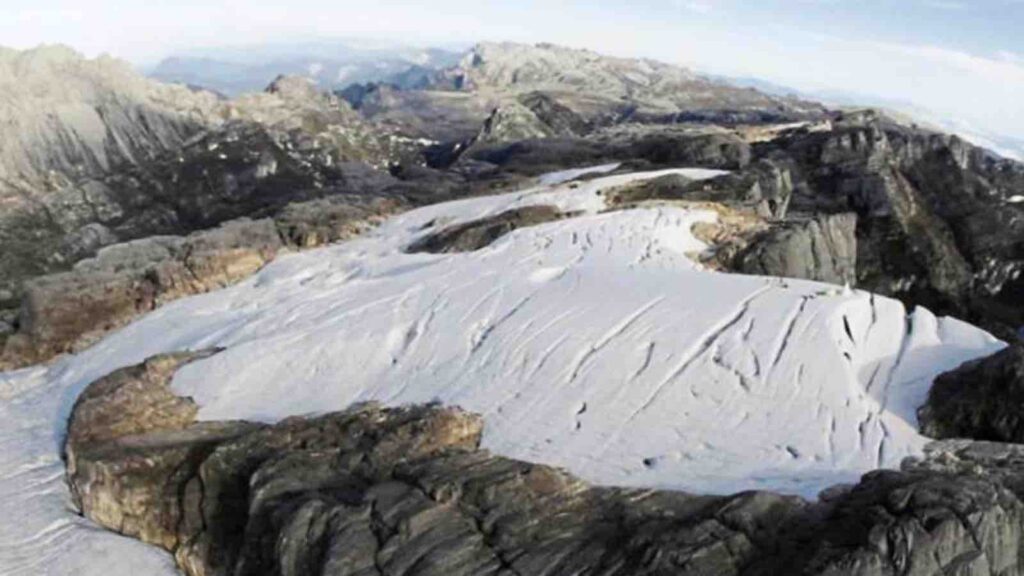Only 2sq km of snow remains at the peak of Puncak Jayawijaya mountain, or 1% of the mountain’s 200sq km area, according to Indonesia’s Meteorological, Climatological, and Geophysical Agency (BMKG).
In Puncak Jaya, Papua, a disturbing environmental transformation is unfolding. The region’s “eternal snow,” once sprawling across 19.3 square kilometers in 1850, has dwindled alarmingly to just 0.34 square kilometers by 2020, marking a 98% reduction. Known also as the Carstensz Pyramid, this limestone mountain soars 4,884 meters above sea level, making it the highest island peak globally and a historic anomaly noted for its equatorial snowcap first recorded by Jan Carstenszoon in 1623.
RELEVANT SUSTAINABLE GOALS


The Meteorology, Climatology, and Geophysics Agency (BMKG) of Indonesia, which has been monitoring these changes, predicts a grim future: the complete disappearance of this ice cap by 2026 due to accelerating melt rates exacerbated by climate phenomena such as El Niño. Donaldi Sukma Permana, a climatology research coordinator at BMKG, points to a possible total loss as early as 2024 if current global warming trends continue.
“We employ the CORDEX-SEA modeling and observational data to forecast the disappearance of Papua’s ice cover based on future climate projections. Our findings indicate that the ice cover at Puncak Jaya is expected to vanish by 2026,” stated Donaldi Sukma Permana, Climatology Research Coordinator at BMKG.
Further, this climatology expert from BMKG noted that the glacier’s thinning rate could lead to its total disappearance as early as 2024. “The risk is increasingly significant because of El Niño, which warms the Earth’s climate and could occur this year,” he emphasized.
Lost Snow in The the Tropics : Cultural and Environmental Stakes
The stakes are high both culturally and environmentally. The disappearance of Puncak Jaya’s snow would not only strip Papua of a major climbing and tourist destination but also erase a sacred symbol for local tribes who venerate the mountain. Ecologically, this melt contributes to global sea level rise and disrupts local ecosystems, potentially affecting the flora and fauna that depend on the ice-bound habitat.
This environmental crisis extends beyond the immediate landscape:
- Cultural Loss: Indigenous tribes view Puncak Jaya’s snow as a sacred site. Its loss would be a blow to their cultural heritage.
- Biodiversity Threats: The surrounding life, both plant and animal, faces significant disruption as the ice retreats.
- Physical Changes: Increased rock exposure accelerates the warming and melting processes, as darker surfaces absorb more solar heat.
Despite the bleak outlook, actions can be taken to mitigate these impacts, primarily through global efforts to reduce greenhouse gas emissions and local conservation strategies to manage and possibly restore the mountain’s ecological balance. The ongoing loss of Puncak Jaya’s snowcap serves as a stark reminder of the urgent need for environmental stewardship in the face of climate change.
Lead image courtesy of AFP
You may also be interested in :
Global Risks Report 2024 : Extreme Weather and Misinformation on The Top of Global Crisis


